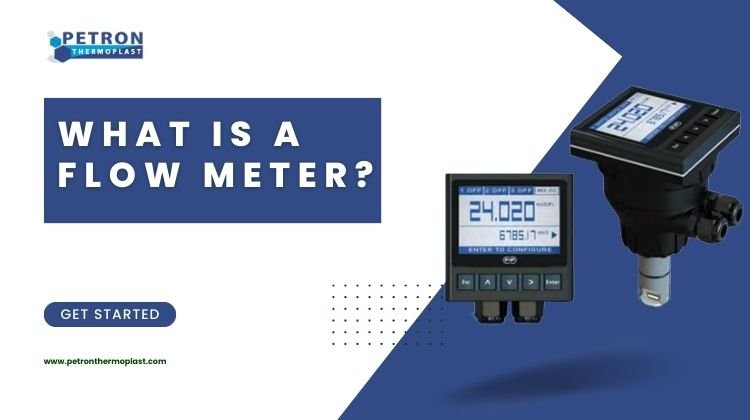Introduction
Flow meters are vital instruments used in various industries to measure the flow rate of liquids, gases, or steam. They play a crucial role in monitoring and controlling the movement of fluids within a system. This comprehensive guide aims to provide a clear understanding of flow meters, What Is a Flow Meter, their types, working principles, and the significance of choosing a reliable flow meter manufacturer in India.
Understanding Flow Meters
Flow meters are devices designed to measure the quantity, velocity, or mass of fluid passing through a specific point in a system. They provide accurate and reliable measurements that are crucial for process control, safety, and efficiency. By monitoring flow rates, flow meters assist in maintaining optimal system performance and preventing potential issues.
How to Use a Water Flow Meter?
Here are some bullet points on how to use a water flow meter:
- Ensure that the water flow meter is properly installed in the water supply line or the designated area where you want to measure the flow.
- Familiarize yourself with the specific instructions provided by the manufacturer for your particular water flow meter model.
- Make sure the water flow meter is calibrated and set to the appropriate units of measurement (e.g., gallons per minute, liters per second).
- Ensure that the water flow is steady and consistent before taking measurements for accurate results.
- Read the flow meter display or gauge to obtain the current flow rate. Some flow meters may have a digital display, while others have analog gauges.
- Take note of the units of measurement displayed and record the flow rate at regular intervals, if necessary.
- Use the water flow meter readings to monitor and analyze the water consumption or flow patterns for various applications, such as irrigation, industrial processes, or residential usage.
- If your water flow meter has additional features, such as data logging or connectivity options, explore and utilize them as needed.
- Regularly inspect and maintain the water flow meter to ensure its proper functionality. Clean or replace any clogged or damaged precision machined parts as recommended by the manufacturer.
- If you encounter any issues or discrepancies with the water flow meter readings, consult the manufacturer’s troubleshooting guide or contact their customer support for assistance.
Types of Flow Meters
Flow meters are available in various types, each suited for specific applications and fluid properties. Here are the most common types:
Differential Pressure Flow Meters
Differential pressure flow meters operate based on the principle of measuring the pressure drop across a constriction in the flow path. Orifice plates, venturi tubes, and flow nozzles are commonly used in this category. They measure the differential pressure to determine the flow rate accurately.
Positive Displacement Flow Meters
Positive displacement flow meters measure fluid flow by dividing it into specific volumetric segments and then calculating the total volume based on these segments. Reciprocating piston meters, oval gear meters, and nutating disk meters fall under this category. They are highly accurate for measuring low flow rates and can handle various fluid viscosities.
Velocity Flow Meters
Velocity flow meters measure the speed of fluid flow to determine the flow rate. Examples include turbine flow meters, vortex flow meters, and electromagnetic flow meters. These meters rely on the relationship between flow rate and fluid velocity.
Mass Flow Meters
Mass flow meters measure the mass flow rate directly, eliminating the need for temperature and pressure compensation. Coriolis flow meters and thermal mass flow meters are commonly used in this category. Mass flow meters are particularly useful when dealing with gases or applications where mass measurement is critical.
Open Channel Flow Meters
Open channel flow meters are specifically designed to measure flow rates in open channels, such as rivers, canals, or wastewater treatment plants. They utilize methods like weirs, flumes, and ultrasonic sensors to determine the flow rate accurately.
How to Install Flow Meters?
Here are some bullet points on how to install a flow meter:
- Select the appropriate location for installing the flow meter in the fluid system. Consider factors such as accessibility, straight pipe lengths, and the nature of the fluid being measured.
- Ensure that the flow meter is compatible with the fluid type, pressure, temperature, and flow rate of the system.
- Prepare the installation site by cleaning and removing any obstructions or debris that may affect the accuracy of the flow meter.
- Follow the manufacturer’s instructions and guidelines for the specific flow meter model you are installing.
- Install any necessary fittings, adapters, or valves to connect the flow meter to the existing piping system. Ensure proper sealing to prevent leaks.
- Ensure that the flow meter is oriented correctly according to the flow direction indicated by the manufacturer.
- Use appropriate tools to tighten the connections securely, but avoid over-tightening to prevent damage to the flow meter or the pipe fittings.
- Install any required accessories or ancillary components, such as transmitters, sensors, or displays, as specified by the flow meter manufacturer.
- Double-check all connections and fittings to ensure they are properly secured and leak-free.
- Perform a visual inspection of the installed flow meter and surrounding area to ensure everything is in order.
- Turn on the fluid flow gradually and check for any leaks or abnormal readings on the flow meter.
- Calibrate the flow meter if required, following the manufacturer’s instructions and using appropriate calibration tools or methods.
- Monitor the flow meter readings for a period of time to ensure accurate and consistent measurements.
- If necessary, perform any additional programming, configuration, or setup steps as recommended by the flow meter manufacturer.
- Keep a record of the installation details, including the location, date, and any specific notes or observations.
Working Principles of Flow Meters
Flow meters employ various working principles to measure flow rates accurately. These principles include the measurement of pressure differentials, volume displacement, velocity, thermal properties, and more. The chosen principle depends on the type of flow meter and the specific application requirements.
Applications of Flow Meters
Flow meters find applications in a wide range of industries, including:
- Oil and gas
- Chemical and petrochemical
- Water and wastewater treatment
- Pharmaceuticals
- Food and beverage
- Power generation
- HVAC (heating, ventilation, and air conditioning)
- Mining
- And many more
Flow meters are crucial for precise flow measurement and control, ensuring optimal process efficiency and regulatory compliance in these industries.
Importance of Choosing a Reliable Flow Meter Manufacturer in India
Selecting a trustworthy flow meter manufacturer in India is vital to ensure the quality, accuracy, and durability of the instruments. A reputable manufacturer will offer reliable products, technical support, and after-sales services. Consider the following factors when choosing a flow meter manufacturer:
Factors to Consider When Selecting a Flow Meter Manufacturer
- Reputation and experience in the industry
- Product quality and reliability
- Certification and compliance with industry standards
- Customization options to suit specific requirements
- Technical support and guidance
- Availability of spare parts
- After-sales service and warranty
- Competitive pricing
- Positive customer reviews and testimonials
Considering these factors will help you make an informed decision and choose a reliable flow meter manufacturer in India.
What Is the K Factor in Flow Meter?
The “K factor” in a flow meter refers to the meter’s calibration factor or discharge coefficient. It is a constant value used to relate the physical flow rate of a fluid to the electrical or mechanical signal produced by the flow meter. The K factor is unique to each flow meter and is determined during the meter’s calibration process.
The K factor represents the relationship between the flow rate and the output signal of the flow meter. It is typically expressed as a numerical value and is used to convert the raw output signal, such as frequency, voltage, or current, into meaningful flow rate units, such as gallons per minute or liters per second.
Conclusion
What Is a Flow Meter? Flow meters are essential instruments used in various industries to accurately measure the flow rate of fluids. They play a crucial role in process control, safety, and efficiency. Understanding the types of flow meters, their working principles, and the significance of choosing a reliable flow meter manufacturer in India is essential for successful flow measurement and control applications. By making an informed choice and selecting the right flow meter, you can ensure optimal system performance, minimize downtime, and achieve accurate and reliable flow measurements.





Pingback: สล็อตทุนน้อย
Pingback: เช่ารถตู้พร้อมคนขับ
Pingback: รับทำ Backlink
Pingback: สล็อตแตกง่ายไม่มีขั้นต่ำ
Pingback: Diyalaa
Pingback: ใบพัดมอเตอร์
Pingback: hr42
Pingback: Aviator Game